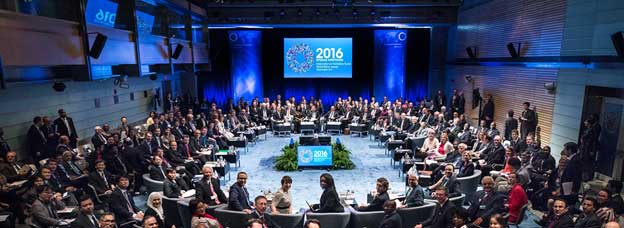QE, or No QE, That is the Question?

GENEVA, Oct 15 (IPS) - The guardians of the global economy convened in Washington this week to discuss their latest global growth forecasts. The World Bank-IMF Board of Governors meetings have been squarely focused on the global response to COVID-19, with economists warning of slowing momentum in wealthy nations and grossly uneven recoveries across the developing world.
Still, since February 2020 governments around the world have deployed US$16 trillion in fiscal support measures to combat the pandemic. These vast sums have provided emergency lifelines to health care systems, businesses, and households.
High fiscal expenditure and low tax revenues raised government debt in 2020 to a record 97% of world GDP. It is projected to stabilise at 99% this year, according to the IMF’s latest Fiscal Monitor, published Wednesday. The report also contends that “exceptional policy responses triggered by the pandemic pose a challenge for discerning the best path forward for fiscal policy.”
Typically, governments deploy a two-pronged approach to fund spending: they can either borrow more or raise taxes (or both). Quantitative Easing (QE) represents another, unconventional policy choice that authorities have turned to in recent economic crises.
QE is shorthand for a set of unorthodox monetary policies in which a central bank purchases government debt (as well as other assets) to increase money supply and lower interest rates. It is designed to spur consumption and investment and, in turn, shore up GDP growth.
While central banks in advanced economies (AEs) have deployed QE since the 2008 financial crisis, constraints are more binding in emerging markets (EMs) economies.
EMs lack the deep financial markets observed in AEs, relying instead on foreign investors (attracted by high interest rates) to cover deficits. As such, measures designed to lower interest rates are seen to deter foreign investors and place downward pressure on domestic currencies.
What’s more, EM governments with access to central bank financing are, rightly or wrongly, thought to exercise less fiscal discipline than their AE counterparts. In turn, rampant quantitative easing risks undermining monetary policy credibility.
In large part, this concern underscores why EM policy makers attribute so much importance to central bank independence – a nebulous concept under normal circumstances, let alone in a crisis, but critical when thinking about the impact debt monetization can have.
First, the erosion between fiscal and monetary policy risks stoking runaway inflation by expanding the monetary base. And second, even if government bond yields are not immediately driven up by money creation, it could happen over the medium-term, raising the cost of future debt financing.
The trade-off between continuing to support economic activity and preserving fiscal space (room in the government budget for extra spending) is therefore thornier for EMs than AEs. “EM central banks are trying to find ways of financing their budgets without being accused of printing money”, says Yilmaz Akyuz, former chief economist at UNCTAD.
“Just as in 2009, the IMF is already talking about returning to ‘normal’ central bank policies”, he noted. Indeed, another IMF report published this week cast aspersions on EM quantitative easing, decrying a lack of policy experience and warning about the “threat of exiting these types of programs.”
But despite the Fund’s repeated exhortations, the central bank of Indonesia (BI) recently pledged to continue buying trillions of rupiah (billions in US$ equivalent) worth of government debt. The ‘burden-sharing’ agreement, unveiled in July 2020, was designed to help finance the 2020 fiscal deficit in the wake of Covid-19.
Last year, BI purchased long-dated government bonds in both primary and secondary markets, in addition to rebating interest payments for certain types of debt. Overall, BI financed roughly half of Indonesia’s 6.1% (of GDP) deficit in 2020, lowering debt repayment costs and providing greater scope to respond to the pandemic.
Back in 2020, the bond-purchasing scheme was deemed a “one-off”, and was widely expected to conclude this year. In August 2021, however, the central bank pledged to extend deficit financing into 2022.
Since August, the price of both government bonds and the rupiah have remained relatively stable. And so long as investors maintain their trust in BI independence and the government’s commitment to fiscal sustainability, Indonesia’s experiment with unorthodox economic policy looks set to continue.
Alexander Kozul-Wright is a consultant for the Third World Network (TWN)
Follow @IPSNewsUNBureau
Follow IPS News UN Bureau on Instagram
© Inter Press Service (2021) — All Rights Reserved. Original source: Inter Press Service
 Global Issues
Global Issues